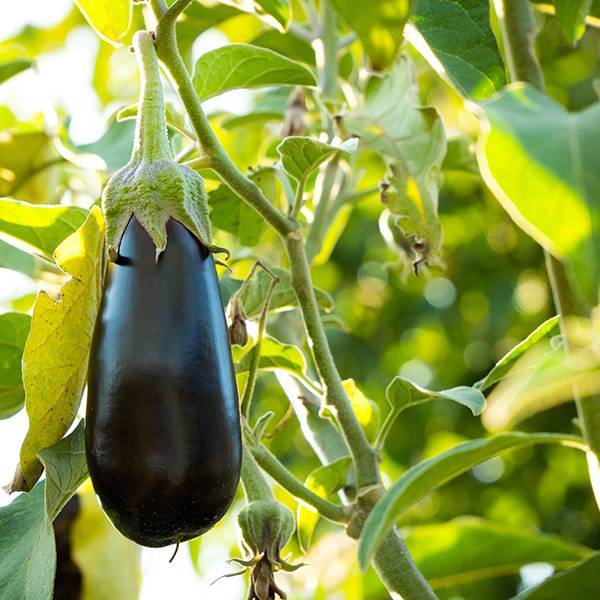
Growing Guide
Full sun. Protection from Strong Winds. Well drained soil.
0.5cm
45-60cm
60-90cm
50-100cm2
1.5cm
Transplant
7-14
85-110
Start seeds in punnets or small pots filled with seed raising mix.
Choose a sunny spot in the garden and enrich with fertilizer.
When seedlings are 7-10cm tall.
Transplant into the garden bed.
Mulch with organic mulch.
Eggplant seedlings can be transplanted after hardening-off and when all danger of frost has passed in your area.
Seedlings should be spaced 45–60 cm (18–24 in) apart, depending on variety, allowing a further 60–90 cm (24–36 in) between rows
Full sun and well-drained soil.
Eggplant fruits are ready to harvest while the flesh is still firm, smooth and seeds are small and tightly packed.
The skin of the fruit should be firm, glossy and dark purple.
If skin starts to wrinkle the flesh will be course and tough.
Overripe fruit will contain darker seeds and will taste bitter.
Harvest the fruit as soon as it is ripe to ensure maximum productivity.
The fruit should be removed from the plant by cutting the calyx (green stem above the fruit) with a sharp knife.
A regular harvest promotes new growth.
Wait until the eggplant is overripe and inedible before you start collecting eggplant seeds.
The eggplant should look dull and off-colored.
Overripe purple eggplants turn tan or brown while white and green eggplants take on a yellowish hue.
An overripe eggplant is typically hard and shriveled.
Slice open the eggplant and separate the flesh from the seeds.
Put the seeds in a bowl of water and wash the pulp away.
Strain the seeds, pat them dry and spread them out on a tray to dry not more than two seeds thick.
There are a number of important eggplant seed saving tips you must follow if you want viable seeds to plant the following spring.
Make sure the seeds are thoroughly dry before you store them.
Put them in a cool place out of the sun where the humidity can be maintained between 20 and 40 percent.
The drying process may take two to four weeks.
After you put the seeds in a jar for the winter, watch for moisture build-up in the jar.
If you see the jar sweating, your seeds are too wet and at risk of becoming moldy and useless.
Add some silica gel capsules or another desiccant imminently to save wet seeds.
If you choose not to store them in a jar, you’ll need to figure out a way to protect your seeds from insects.
Consider a sturdy zip-locking plastic bag in this case, but ensure the seeds are completely dry.

Zone 1 - Cool
October , November
Zone 2 - Temperate
September , October , November , December
Zone 3 - Subtropical
January , February , March , September , October , November , December
Pests
Problems